
In this lesson students will prepare a "Show and Teach" for their classmates to follow.
- Subject:
- English Language Arts
- Speaking and Listening
- Material Type:
- Lesson Plan
- Provider:
- Utah Education Network
- Date Added:
- 02/16/2021

In this lesson students will prepare a "Show and Teach" for their classmates to follow.
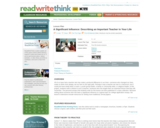
In this project, students write tributes to teachers who have made a profound difference in their lives then publish their work in a class collection.
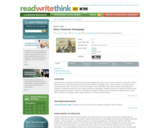
Students analyze personal homepages, as well as a character in a book they have read, and then create a homepage for the character.
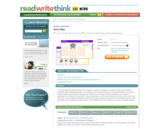
The Story Map interactive is designed to assist students in prewriting and postreading activities by focusing on the key elements of character, setting, conflict, and resolution.

Strategic reading allows students to monitor their own thinking and make connections between texts and their own experiences. Students who make connections while reading are better able to understand the text they are reading. It is important for students to draw on their prior knowledge and experiences to connect with the text. Students are thinking when they are connecting, which makes them more engaged in the reading experience.
Students gain a deeper understanding of a text when they make authentic connections. However, teachers need to know how to show students how a text connects to their lives, another text they have read, or the world around them. In this strategy guide, you will learn how to model text-to-self, text-to-text, and text-to-world connections for your students so that they may begin to make personal connections to a text on their own.
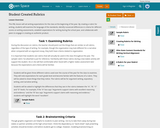
This PBL lesson will set writing expectations for the class at the beginning of the year. By creating a rubric for writing, students will examine the language of the standards, identify nunanced differences in criteria for different scores on writing assessments, establish expectations for writing during the school year, and collaborate with peers to engage in creating an authentic product.
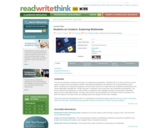
Students are introduced to the genre of multimedia presentations through a review and analysis of online presentations. They then apply what they have learned to create their own multimedia presentations.
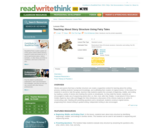
Stories and poems that have a familiar structure can create a supportive context for learning about the writing process, building students' background knowledge, and scaffolding their creation of original stories. In this lesson for students in second or late first grade, teachers help students explore the concepts of beginning, middle, and ending by reading a variety of stories and charting the events on storyboards. As they retell the stories, students are encouraged to make use of sequencing words (first, so, then, next, after that, finally). A read-aloud of Once Upon a Golden Apple by Jean Little and Maggie De Vries introduces a discussion of the choices made by an author in constructing a plot. Starting with prewriting questions and a storyboard, students construct original stories, progressing from shared writing to guided writing; independent writing is also encouraged.
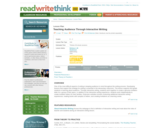
One of the most difficult aspects of writing is keeping audience in mind throughout the writing process. Developing lessons that support this strategy for writing is essential in the elementary classroom. This lesson supports first-grade students in learning about audience. Through interactive writing, students work together to create a genuine invitation letter for a group of their peers. In addition to the interactive writing experience, students work independently to create invitation letters for their families. Extension activities include conducting additional interactive writing experiences, reading books with samples of letters, and creating invitations at a learning center.
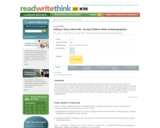
Students tell their life stories in this lesson about autobiographies based on family photographs.
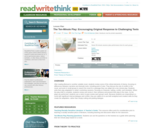
Students use both analytical and creative skills to adapt passages from a novel with significant internal dialogue and conflict, such as Toni Morrison's "Beloved", into a ten-minute play.
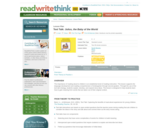
The importance of reading aloud to children is an established tenet of reading instruction. This lesson supports the language development and reading comprehension of kindergarten through second graders. Through the use of the text talk strategy, students explain, develop, and expand story ideas. This lesson is designed to help students learn how to gain meaning from words that are taken out of their original context.
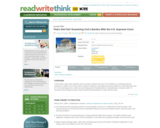
Students have the right to have fun in this lesson in which they create a PowerPoint presentation about civil rights and the Supreme Court.
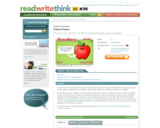
Formerly known as Shape Poems, this online tool allows elementary students to write poems in various shapes.
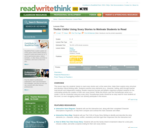
Students examine story elements through teacher read-alouds and independent reading and then use reader-response journals and graphic organizers to prepare for the creation of their own scary stories.
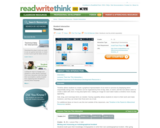
Students can generate descriptive timelines and even include images in the description.
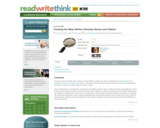
Everyone knows that "Star Wars" character Darth Vader is a villain. This lesson asks students to explore how they know such things about heroes and villains they encounter in texts. After examining how moviemakers communicate the villainy of Darth Vader, students examine a passage from Harry Potter and the Sorcerers Stone that describes the villain Voldemort, noting how Rowling communicates details about the character. Students then read novels in small groups, with each group member tracking a character in a reading log. When they finish their novels, students design posters and present details on their novels to the class. After the presentations, students make observations on how authors develop character and write journal entries reflecting on what they learned.
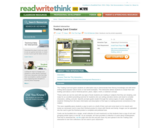
Trading Card Creator This tool provides a fun and useful way to explore a variety of topics such as a character in a book, a person or place from history, or even a physical object. An excellent tool to for summarizing or as a prewriting exercise for original stories.
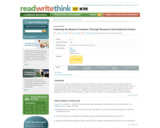
Students learn how to walk a mile in someone else's shoes by reading historical fiction about the Underground Railroad.
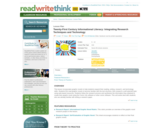
Students develop their reading, writing, research, and technology skills using graphic novels. As a final activity, students create their own graphic novels using comic software.